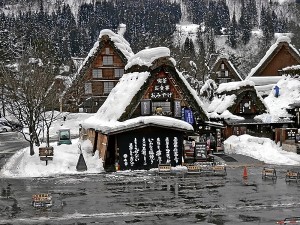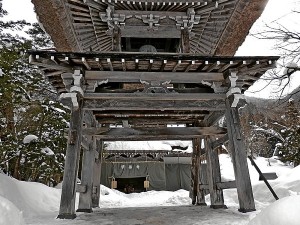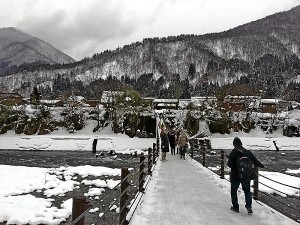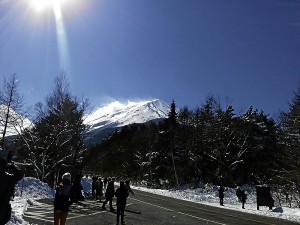
An hour’s plane ride from Narita, the city of Kanazawa was our first stop. Situated in the western part, facing the Sea of Japan, it doesn’t have the hustle and bustle of a big Japanese city. The sidewalks don’t teem with scurrying pedestrians. But it’s not a sleepy town either, for it has the amenities of a modern city.
Kanazawa has its quaint charm—the locals are warm and shop owners offer you tea to escape the winter cold. Definitely, the city can easily win anyone over.
We couldn’t have found a better tour guide than All Nippon Airways. Barely two years in the Philippines, it has positioned itself as the premier Japanese airline, also a leader in domestic travel in Japan.

So, off-the-beaten paths we went.
Kanazawa was spared from the bombings in World War II—that is why one can still get to see Old Japan here. Walking the cobblestone streets of Korinbo and Higashi Chaya district, we get a good glimpse of old houses, preserved houses and still throbbing with life. Korinbo is also known for its geisha girls—these are not tourist attractions but are part of the city’s everyday life.
We visit the city’s seafood market, where, surprisingly, winter is the best time to go. It is known to have the best seafood—try the freshly caught winter crab, fish for sashimi, and oysters.

The city is known to have one of the most beautiful gardens in Japan, the Kenrokuen Garden.
‘Hands in prayer’
After a two-hour bus drive from Kanazawa, one reaches the mountains of central Japan. In the Shirakawa-go region, one can find the village of Ogimachi and other outlying villages which have been declared a World Heritage site by Unesco. There one finds the well-preserved triangular gassho-zukuri farmhouses, their roofs shaped like, they describe it, “hands in prayer.” They are designed especially to cope with the heavy snow fall in the region.

Interestingly, winter is the perfect time to visit this place. The bus arrives at a designated spot, people cross a bridge going to the village from where one can enjoy the view of the ravine and the Shokawa river. The village of Ogimachi has been considered a living museum, and there are 300 families in the area. Tourists can even walk in and see how these families live.
Stay overnight to fully appreciate these wooden houses, some of which are more than 250 years old. With their illuminated windows, they are considered among the most picturesque sites in Japan.
Mt. Fuji

One of Japan’s iconic images, Mt. Fuji is dear to the Japanese who consider it sacred and a source of inspiration. On a clear day, one can see the country’s highest peak from a Tokyo high-rise. To get closer to the mountain, one can drive for one and a half hours from the city.
Around winter time, there are sightseeing tours that will bring you closer to the volcano, but the bus will bring you only to the first base camp, since the roads beyond that are not yet passable. But even from there, beyond the snow-covered trees is the volcano in its majestic glory. Curiously, it is also during the colder season when visibility tends to be better.
After that, one can enjoy touring the volcano’s surrounding five lakes and even try a ferry ride.









































